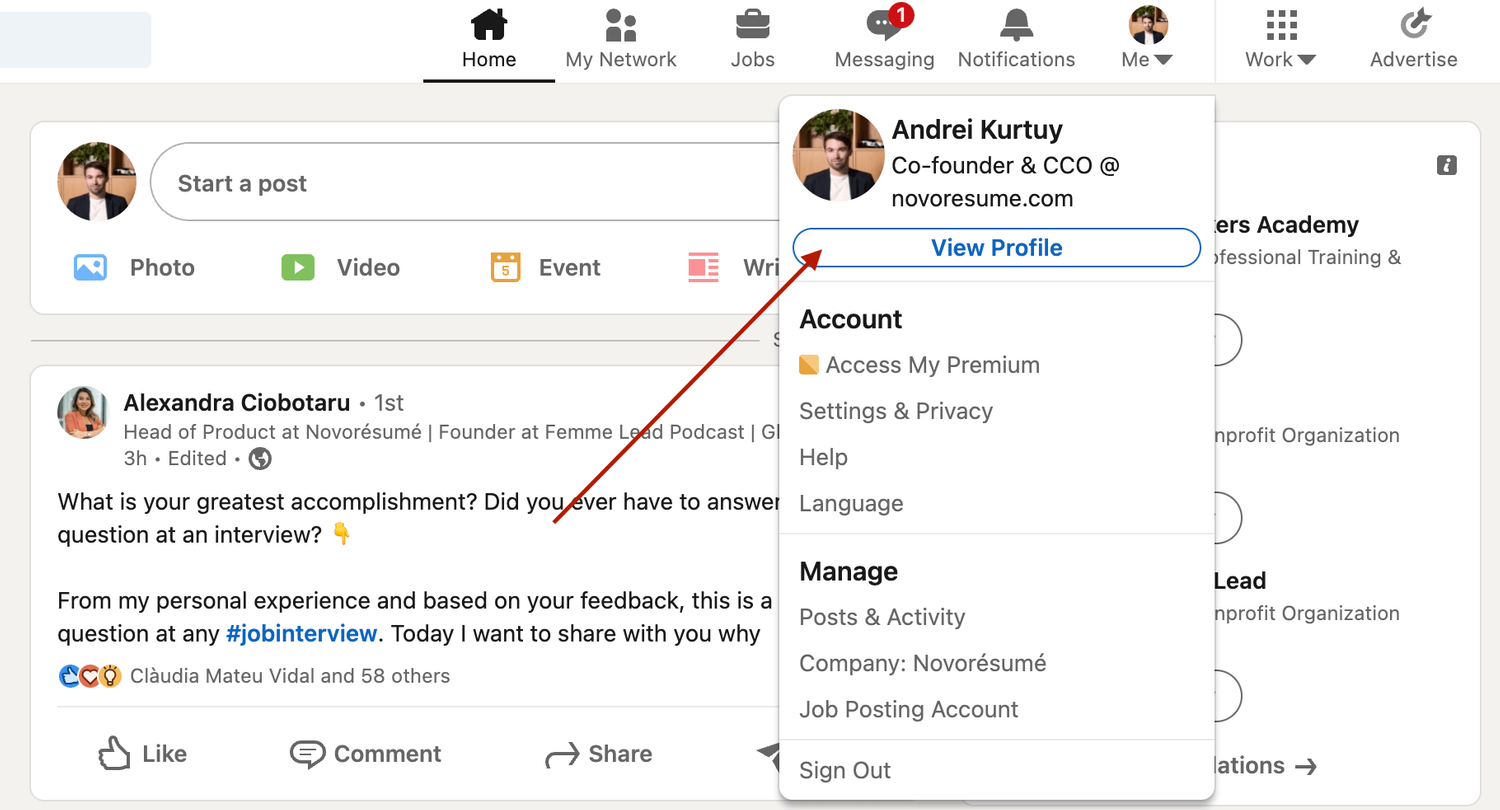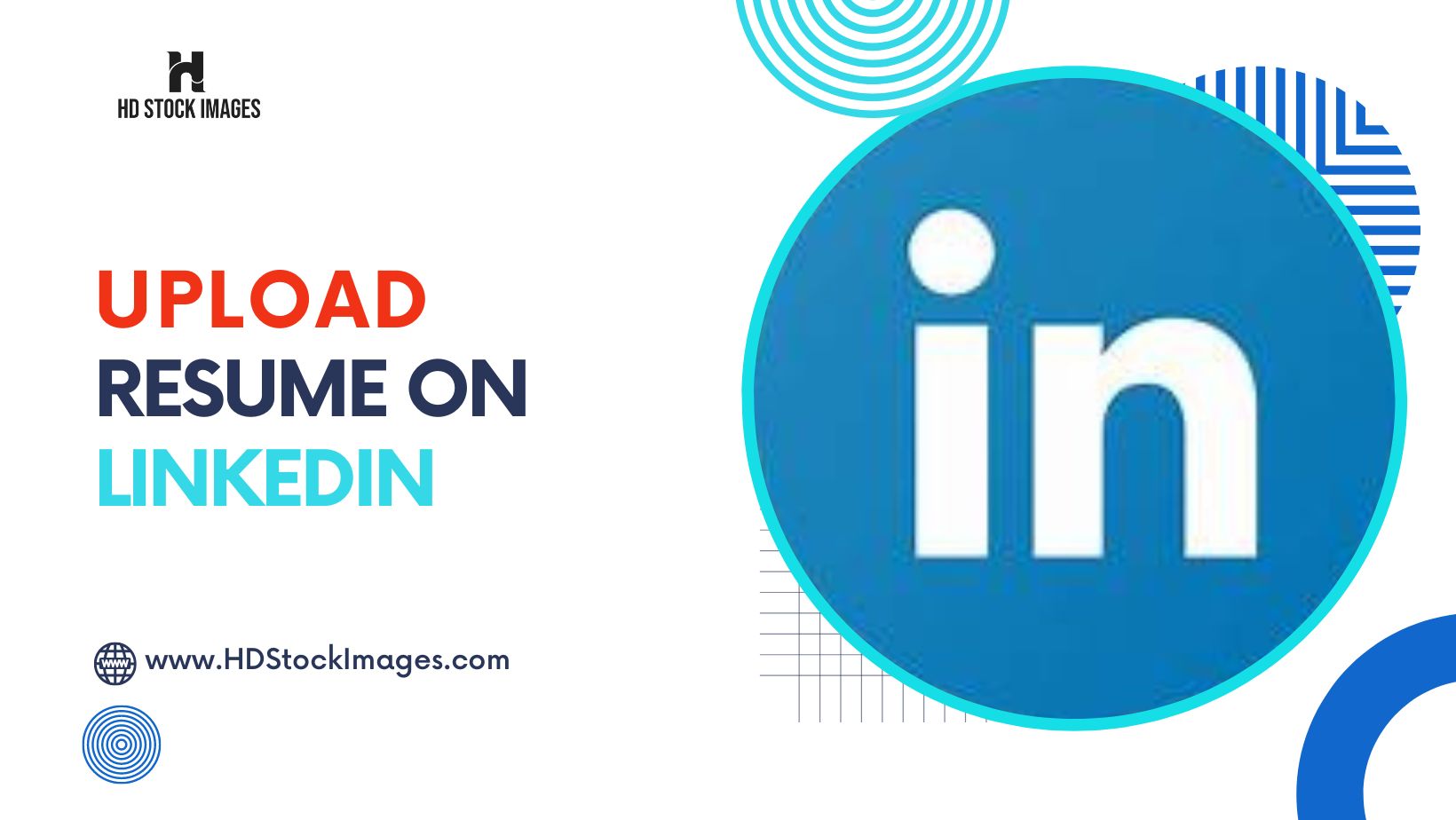1. Introduction:
LinkedIn is a powerful platform for professionals to showcase their skills, experience, and achievements. While building an impressive profile is crucial, incorporating your resume into your LinkedIn profile takes it a step further. In this blog post, we will guide you through the process of uploading your resume on LinkedIn, providing a simple and comprehensive approach.By integrating your resume, you can provide a more detailed and comprehensive overview of your professional background, making it easier for potential employers, recruiters, and connections to understand your qualifications. Whether you're actively job seeking or simply looking to strengthen your professional presence, this guide will help you navigate the resume upload feature on LinkedIn with ease.2. In Linkedin Where to Upload Resume?

- In your profile: You can upload your resume to your profile so that it is visible to anyone who views your profile. To do this, go to your profile and click on the "Edit Profile" button. Under the "Experience" section, click on the "Add Education" or "Add Experience" button and select "Upload Resume". You can then upload your resume file.
- In a job application: When you apply for a job on LinkedIn, you can upload your resume as part of your application. To do this, go to the job posting and click on the "Apply" button. You will then be prompted to upload your resume.
- Use a recent version of your resume.
- Make sure your resume is formatted correctly.
- Use a file name that is easy to identify.
- Keep your resume file size to 2MB or less.
- If you are uploading your resume to your profile, make sure it is visible to everyone.
- If you are uploading your resume to a job application, make sure it is compatible with the job application system.
3. Understanding LinkedIn's Resume Feature
LinkedIn offers a resume feature that allows users to upload and showcase their resumes on their profiles. This feature enhances the overall professional presentation and provides a more comprehensive view of a user's skills, experience, and qualifications. By understanding LinkedIn's resume feature, users can take full advantage of this functionality to strengthen their profiles and increase their visibility to potential employers and professional connections.Uploading your resume on LinkedIn offers several benefits. Firstly, it provides a convenient way for recruiters and hiring managers to access your complete professional history in one place. Additionally, having a resume attached to your profile can enhance your credibility and showcase your expertise and accomplishments. It also enables you to highlight specific skills and experiences that may not be fully captured in other sections of your profile.LinkedIn accepts various file formats for resume uploads, including PDF, DOC, DOCX, and RTF. This flexibility allows users to upload their resumes in a format that preserves the document's layout and formatting. However, it is essential to ensure that the uploaded resume is compatible with LinkedIn and appears professional and well-structured.By leveraging LinkedIn's resume feature, users can provide a comprehensive snapshot of their professional journey, making it easier for potential employers, recruiters, and professional connections to assess their qualifications. It is a valuable tool to stand out in the competitive job market and establish a strong professional brand on the platform.I've successfully installed the roof blind. Going to my Linkedin to update my resume and write an inspiring success story.
— Petar Acanski (@ThizizRAZ) June 27, 2023
4. Customizing Your LinkedIn Profile with Your Resume
Customizing your LinkedIn profile with your resume allows you to create a cohesive and comprehensive professional presence. By incorporating details from your resume into various sections of your profile, you can provide a deeper understanding of your skills, experiences, and achievements. Here's how you can effectively customize your LinkedIn profile with your resume:1. "About" Section: Use the "About" section to provide an overview of your professional background, incorporating key highlights from your resume. Craft a compelling summary that showcases your unique value proposition, expertise, and career goals. This section can serve as a concise version of your resume's objective or summary statement.2. Experience Section: Align your LinkedIn profile's experience section with the work history detailed in your resume. Include relevant job titles, company names, dates of employment, and concise descriptions of your roles and responsibilities. Highlight significant accomplishments, projects, or results to showcase your contributions and impact.3. Education Section: Ensure that your education section on LinkedIn mirrors the educational qualifications listed on your resume. Include details such as degree names, institutions attended, and any honors or certifications earned. This consistency reinforces the accuracy of your profile and reinforces your educational background.4. Skills and Endorsements: Identify key skills from your resume and list them in the skills section on your LinkedIn profile. These can be hard skills, technical proficiencies, or soft skills that highlight your strengths and areas of expertise. Seek endorsements from connections to validate your skills and enhance your credibility.5. Recommendations: Request recommendations from past colleagues, supervisors, or clients who can provide insights into your work ethic, skills, and professional attributes. These recommendations can further validate the claims made in your resume and strengthen your profile's credibility.6. Featured Section: Leverage LinkedIn's "Featured" section to showcase specific projects, presentations, or publications that are mentioned in your resume. Upload relevant files, links, or media that provide evidence of your accomplishments, making your profile more engaging and dynamic.Remember to maintain consistency between your resume and LinkedIn profile by ensuring that the information provided aligns accurately. Regularly update both your resume and LinkedIn profile to reflect any changes or new achievements in your professional journey.By customizing your LinkedIn profile with your resume, you create a more comprehensive and compelling representation of your professional background. This cohesive approach enhances your chances of attracting the attention of recruiters, potential employers, and professional connections, ultimately increasing your opportunities for career growth and networking success.5. Updating Your Resume on LinkedIn
Updating your resume on LinkedIn is essential to ensure that your profile accurately reflects your latest skills, experiences, and accomplishments. Here are some steps to follow when updating your resume on LinkedIn:1. Review and Revise: Take the time to review your current resume and make any necessary revisions or updates. Update your employment history, add new skills or certifications, and include recent achievements that showcase your professional growth.2. Choose the Right Format: Save your updated resume in a compatible format, such as PDF, DOC, DOCX, or RTF. Ensure that the formatting remains intact and that the document is easily readable.3. Access the "Resume" Feature: Log in to your LinkedIn account and navigate to your profile. Look for the "Add profile section" button, and select "Featured" from the dropdown menu. From there, choose the "Media" option and select "Upload" to add your updated resume.4. Replace or Add a New Resume: If you have previously uploaded a resume on LinkedIn, you can choose to replace it with the updated version. Simply delete the existing resume and upload the new one in its place. If this is your first time uploading a resume, follow the prompts to add the document.5. Verify Formatting: After uploading your resume, preview it on your LinkedIn profile to ensure that the formatting appears as intended. Check for any errors or formatting issues and make adjustments as necessary.6. Notify Your Connections: To inform your network about the updated resume, consider creating a post or sending a brief message to key connections, letting them know about the changes and inviting them to review your profile.7. Keep Your Profile Consistent: Remember to maintain consistency between your resume and LinkedIn profile. Regularly review and update both documents to ensure they align with each other and accurately represent your professional information.Updating your resume on LinkedIn is a proactive step in keeping your profile current and relevant. By showcasing your most recent achievements and skills, you increase your chances of attracting opportunities and connecting with professionals who are seeking your expertise.The following video is about In Linkedin Where to Upload Resume:FAQ for where to upload your resume on LinkedIn:
- Where can I upload my resume on LinkedIn?
- You can upload your resume to your profile or to a job application.
- How do I upload my resume to my profile?
- Go to your profile and click on the "Edit Profile" button.
- Under the "Experience" section, click on the "Add Education" or "Add Experience" button and select "Upload Resume".
- You can then upload your resume file.
- How do I upload my resume to a job application?
- Go to the job posting and click on the "Apply" button.
- You will then be prompted to upload your resume.
- What are the benefits of uploading my resume to LinkedIn?
- Recruiters can easily find your resume when they are searching for candidates.
- You can use your resume to showcase your skills and experience to potential employers.
- You can keep your resume up-to-date on LinkedIn so that it is always visible to potential employers.
- What are the file formats that LinkedIn supports for resumes?
- LinkedIn supports PDF and Microsoft Word (DOCX) files.
- What is the maximum file size for a resume on LinkedIn?
- The maximum file size for a resume on LinkedIn is 2MB.
- Can I upload multiple resumes to LinkedIn?
- Yes, you can upload multiple resumes to LinkedIn. However, only one resume will be visible on your profile at a time.
- Can I upload my resume to LinkedIn if I am not a member?
- No, you must be a member of LinkedIn to upload your resume.

 admin
admin








